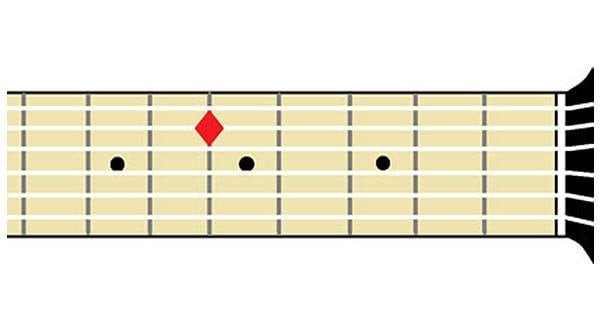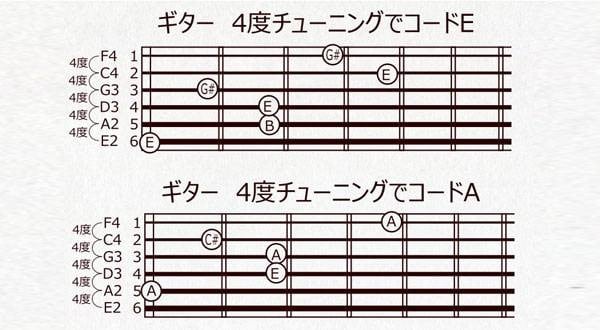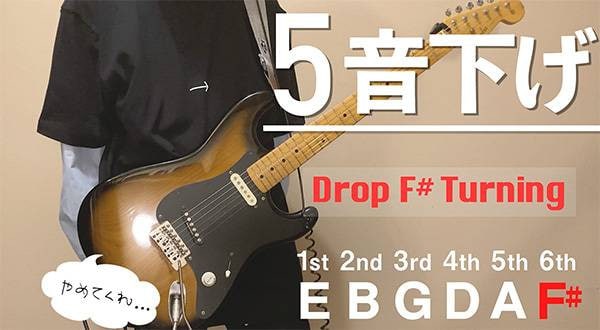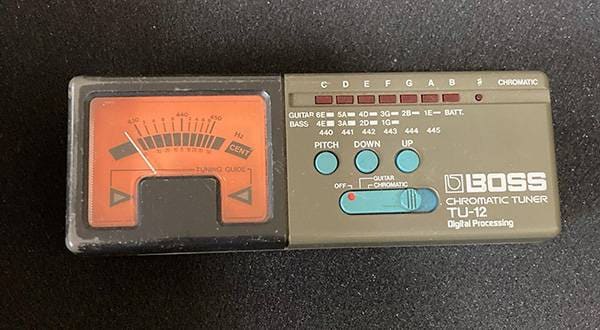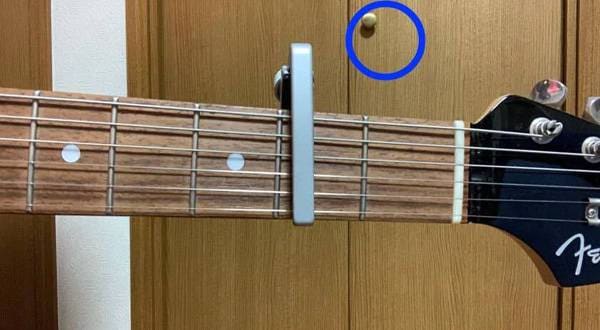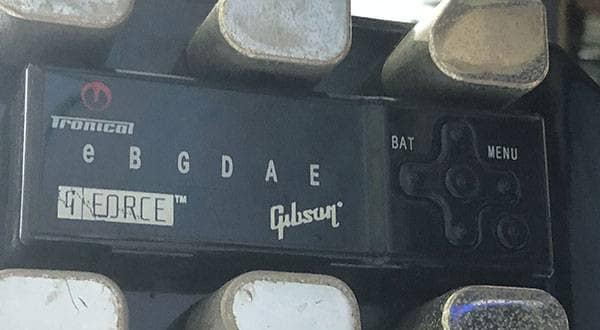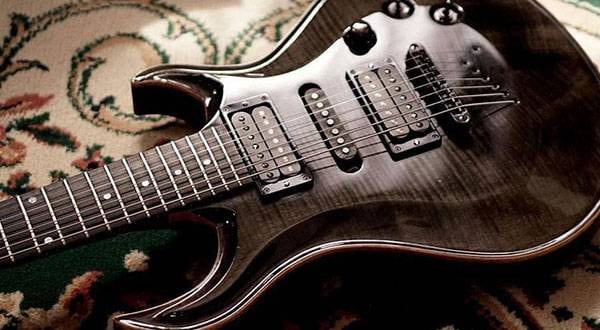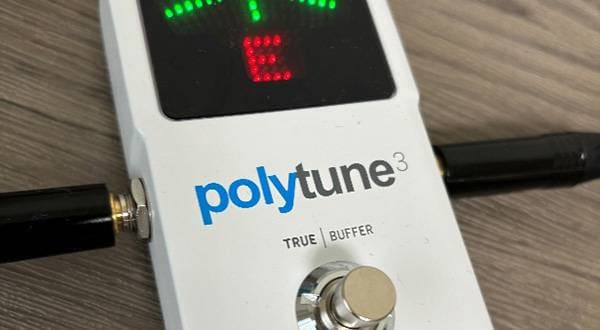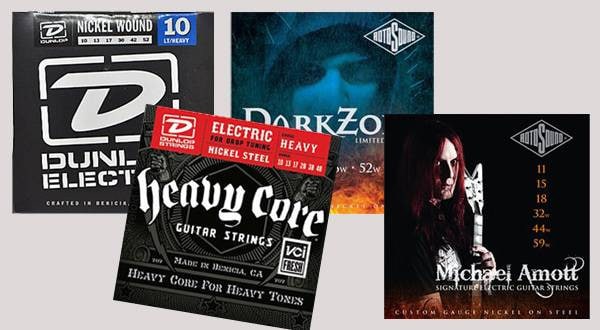
- Sound House online course
- Guitar lessons for beginners
- How to tune a guitar
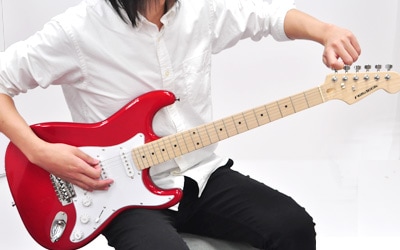
How to tune a guitar
~ Let's listen to the sound of an open string ~
Tuning is the adjustment of each string of the guitar to a fixed pitch.
Playing with the correct tuning is a shortcut to improving! Be sure to tune before playing your guitar.
Here's how to tune a guitar using a tuner.
Contents
Check out the video "How to tune a guitar"
Pitch of each string
The standard tuning of the guitar starting from the 6th string (the thickest string) is E, A, D, G, B, E.
After checking the pitch of each string, let's get started.


For 7-string guitars, standard tuning is to match the 7-string to the B (B) sound.

Guitar Tuning Reference Pitch
Listen to the open strings of various tunings.
- 6th
- 5th
- 4th
- 3rd
- 2nd
- 1st

- 6th
- 5th
- 4th
- 3rd
- 2nd
- 1st

- 6th
- 5th
- 4th
- 3rd
- 2nd
- 1st

- 6th
- 5th
- 4th
- 3rd
- 2nd
- 1st

- 7th
- 6th
- 5th
- 4th
- 3rd
- 2nd
- 1st

Method of tuning
To tune the guitar, adjust the pitch by turning the pegs on the head.


Note that guitars with pegs on both sides like Les Paul have different orientations for turning pegs with 6-4 strings and 3-1 strings.
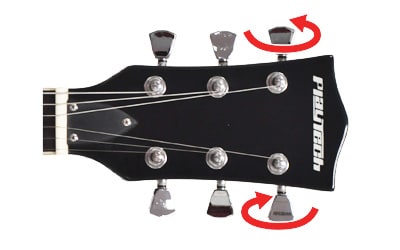
Let's use a tuner!
A tuner is a must-have item when tuning!
You can tune easily and accurately by using the tuner. There are mainly the following types of tuners.
Card type
Many types available at low price models. Some models are integrated with a metronome.
Featured Products
-
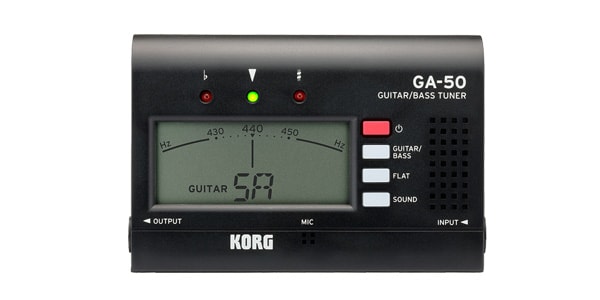
KORG / GA-50
¥2,480
Standard model card type tuner. Easy-to-hold price is also attractive.
-
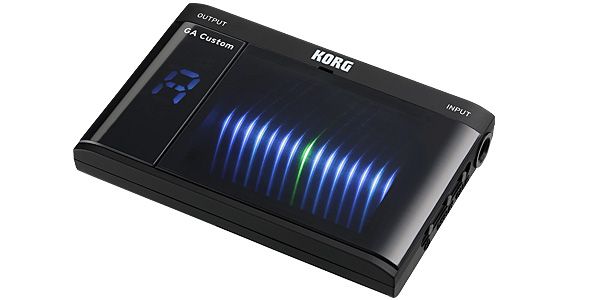
KORG / GA Custom Black
¥4,928
Successor model to the classic GA-50 card-type tuner. Equipped with a 3D visual meter which shows the tuning level clearly. The accuracy is also greatly improved to ± 0.1 cents.
-
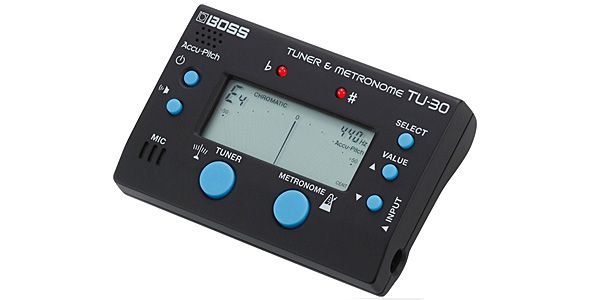
BOSS / TU-30
¥2,860
Needle-type model with excellent visibility. There are a lot of functions such as notifying you by sound when it matches the correct pitch.
Pedal type
This type is about the same size as a compact effector, and can be incorporated into an effector board. There are many sophisticated models.
Featured Products
-
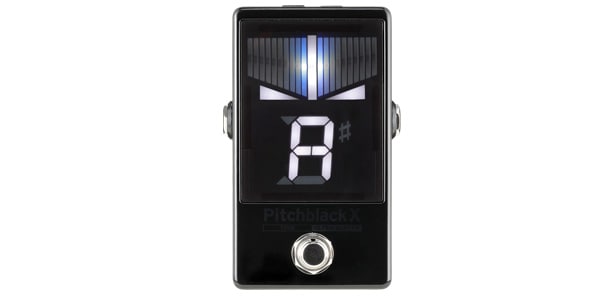
KORG / Pitchblack X
¥12,800
Successor to the standard model TU-2. Equipped with a high brightness mode that makes it easy to see even on dark stages.
-
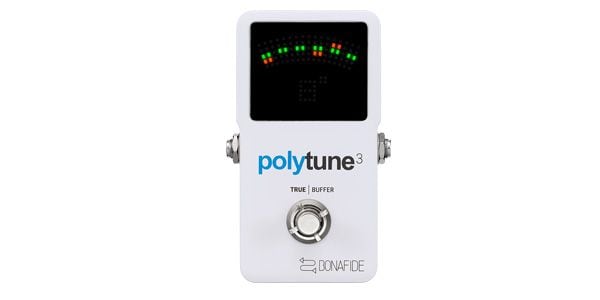
TC Electronic / Polytune 3
¥9,980
High-performance model capable of six-string simultaneous tuning. It is the third generation and incorporates a buffer circuit that prevents sound quality deterioration.
-
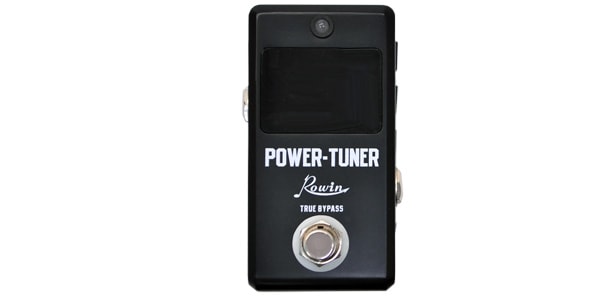
ROWIN / LT-920
¥6,780
Pedal-type tuner that combines the popular buffers One Control / BJF BUFFER and KORG / Pitchblack Mini. Can minimize the sound change prevent deterioration of sound quality.
Clip type
A model that detects vibrations by pinching the guitar head and performs tuning. As it is not necessary to connect with cable, it is useful at the time of home practice.
Featured Products
-
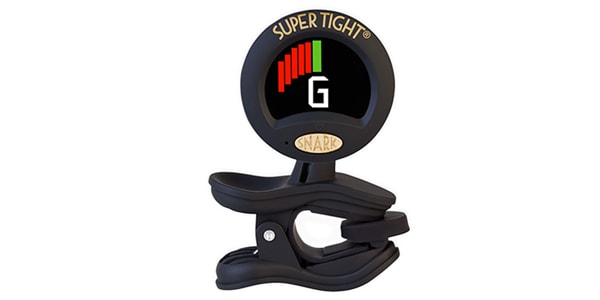
SNARK / ST-8
¥2,380
Pitchclip, a classic clip tuner, collaborates with Pokemon! The indicator that resembles a monster ball and has excellent visibility.
-
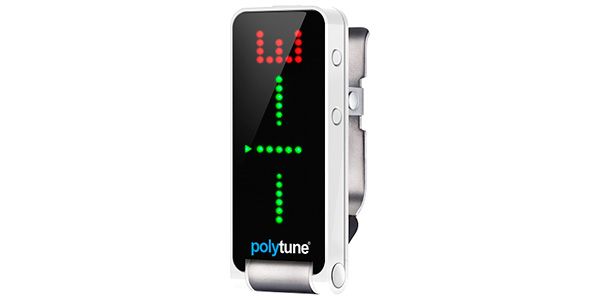
TC Electronic / Polytune Clip
¥5,780
A model that can be tuned to 6 strings simultaneously just by putting it on the head. The flash mode boasts a high accuracy of ± 0.02 cents.
-
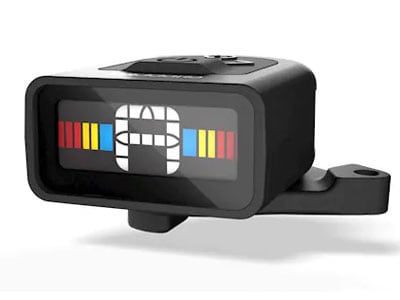
DADDARIO / PW-CT-21 NS Micro Clip Free Tuner
¥2,810
Ultra small clip tuner. It is not noticeable even on the stage because it is completely hidden by the head.
Let's actually tune the guitar!
Perform tuning in the following procedure.
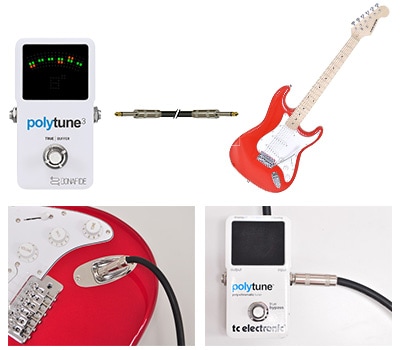
01
Connect the guitar and tuner with a cable.
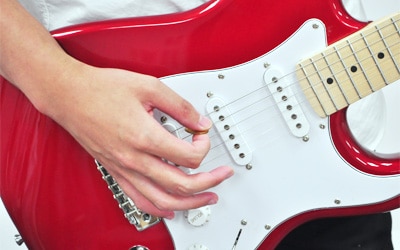
02
After making sure that the volume of the guitar is up, tune the strings and adjust the pitch.
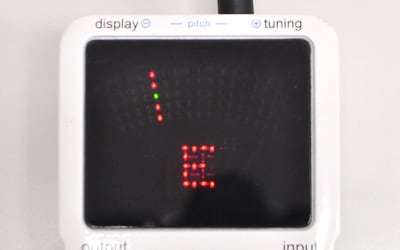
03
Play the strings and check the tuner
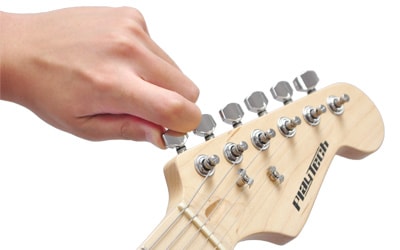
04
Adjust the pitch by turning the peg
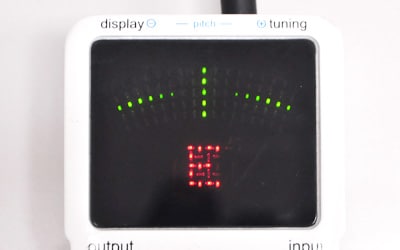
05
Adjust until the meter indicates the center

06
Perform the same process on all strings, from 6 to 1 string. Make sure to check all six strings, even if only one sound is incorrect. Repeating the process, tuning is complete if the pitches of all the strings match.
Point!
When tuning, do so in the direction of tightening the peg. Loosening the peg will cause unevenness and tuning will be lost easier.
If the pitch goes up too much, you can tune more accurately if you lower the pitch you want to match and then turn the peg in the direction to tighten it again.

TIPS
How do I stabilize the needle of the tuner?
When using a card-type or pedal-type tuner, overtones can be reduced by turning down the tone slightly to stabilize the pitch recognition and the tuner needle.
What is calibration?
The reference pitch for tuning is called the calibration pitch.
In the case of the guitar, it is common to set A (La) at 440Hz. However, recently some orchestras and so on set A at 442Hz.
The calibration pitch varies between eras as well. It is said that, in the Baroque Era, A was set at 415Hz, a semitone lower than the present A.
By the way, Dimebag Darrell, the guitarist for the heavy metal band PANTERA, produced a heavier sound by tuning with A set at 431Hz.
What is drop tuning?
Tuning with one string tuned one note lower (for example, the 6th string tuned to D instead of E) is called drop tuning.
With the 6th dropped to D, with the rest of the strings tuned regularly, it is called drop D tuning.
Lowering the 6th string gives you a heavier sound, as well as the advantage allowing you to hold power cords with one finger.
Eric Johnson's Tuning
Guitarist Eric Johnson, who is well known for his commitment to tone (he's able to distinguish the sound of the battery used in his effectors), changes pedal placement on his pedal board in order to obtain the best tone and sound for the venue he is playing in at the time.
Many people tune their guitars starting from the 6th strings to the 1st string in order, but Johnson tunes from the 3rd string to the 1st string, and then from the 4th string to the 6th string.
This method makes it more difficult for the guitar to get out of tune and the tone is better as a result.



